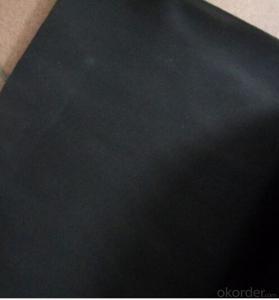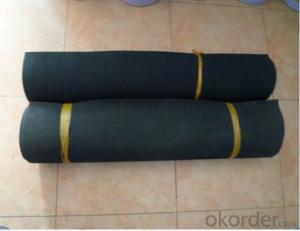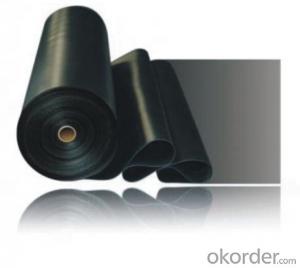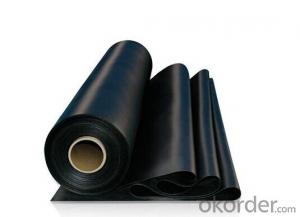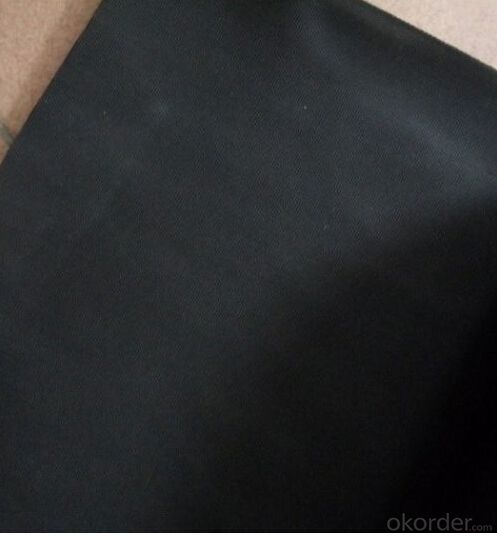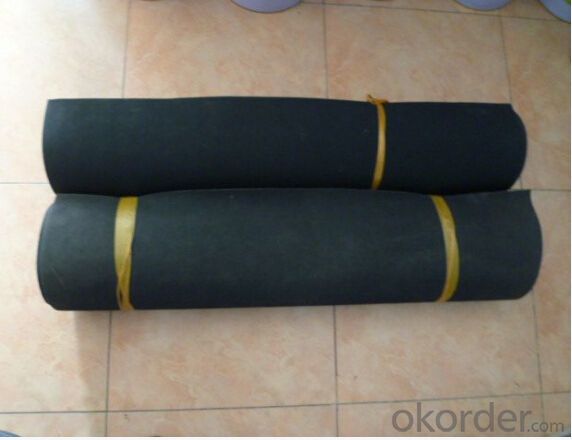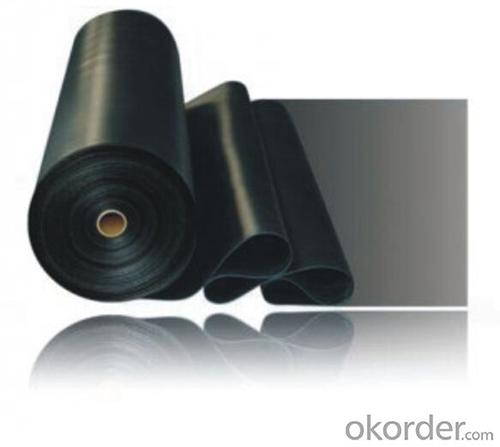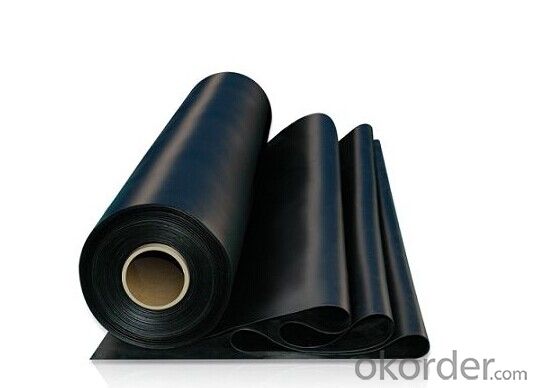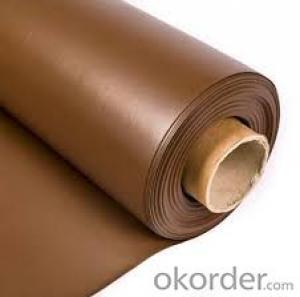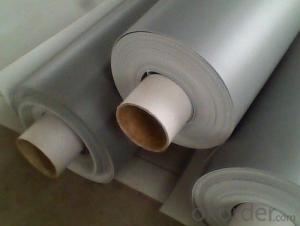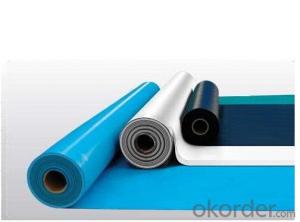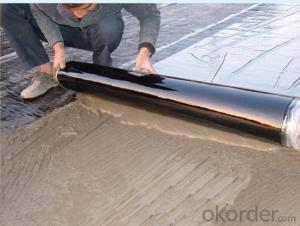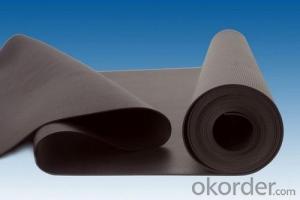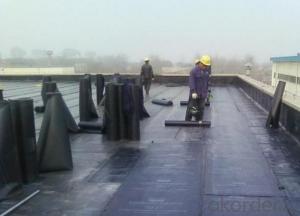EPDM Waterproofing Membrane Factory Price
- Loading Port:
- Qingdao
- Payment Terms:
- TT OR LC
- Min Order Qty:
- 2000 m²
- Supply Capability:
- 100000 m²/month
OKorder Service Pledge
OKorder Financial Service
You Might Also Like
EPDM waterproofing Rubber membrane
1. Introduction of EPDM Waterproofing Membrane:
EPDM Waterproofing Membrane is the modified materials which is widely used at home and abroad in the kinds of roofs, tunnel, basement such sorts of constructions' waterproofing.
They are based upon EPDM rubber with modifier, softener and accelerant assistants added to provide flexibility and stability . Through the precise ingredients, mixing, extrusion, rolling, curing processes to made of modified EPDM Waterproofing material with high strength and high flexibility.
2. Specification of EPDM Waterproofing Membrane:
Type | EPDM Waterproof Membrane | ||
Material | EPDM Rubber | ||
Thickness | 1.2mm | 1.5mm | 2.0mm |
Weight(kg/m2) | 1.54-1.58 | 1.79-1.83 | 2.25-2.29 |
Size | 1.2m(width) * 20m(length)/roll | ||
Type | Vulcanized & Weldable | ||
Pattern | Non-reinforced(homogeneous) | ||
Packing | 24sqm/roll, with plastic bag | ||
Color | Black | ||
Application | Roof, basement, pond, Lake, steel structure roof, swimming pool, underground, tunnel, etc | ||
3. Product Features of EPDM Waterproofing Membrane:
1. Great tensile strength,long-range elasticity and aging resistant.
2. Excellent heat reisistant and can be used under -70°C~~+110°C .
3.Good anti-corrosion, ultraviolet resistant, root penetration resistance
4.Long life use over 50 years and used longer 100 years or more under the condition of buried in the ground.
5.Light and easy to install.
4. Application of EPDM Waterproofing Membrane:
(1) Roofs, Basement, Toilets
(2) Industrial and civil building waterproofing
(3) Geosynthetic liner for swimming pool, channels, irrigation system
(4) Especially suitable for projects with high requirements in durability, anti-corrosion and deformation
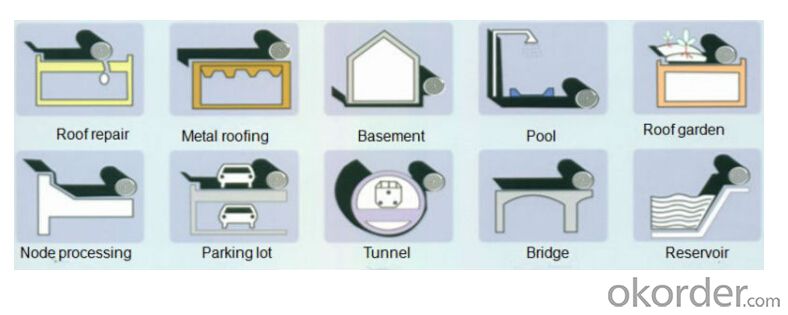
4. Some photos:
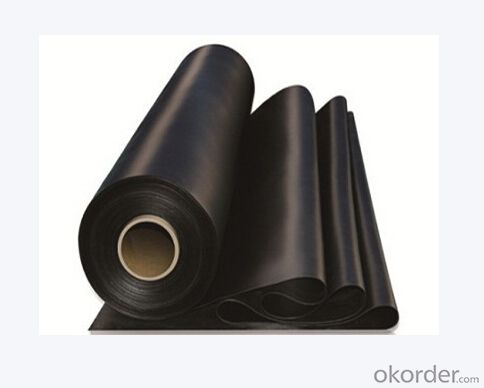
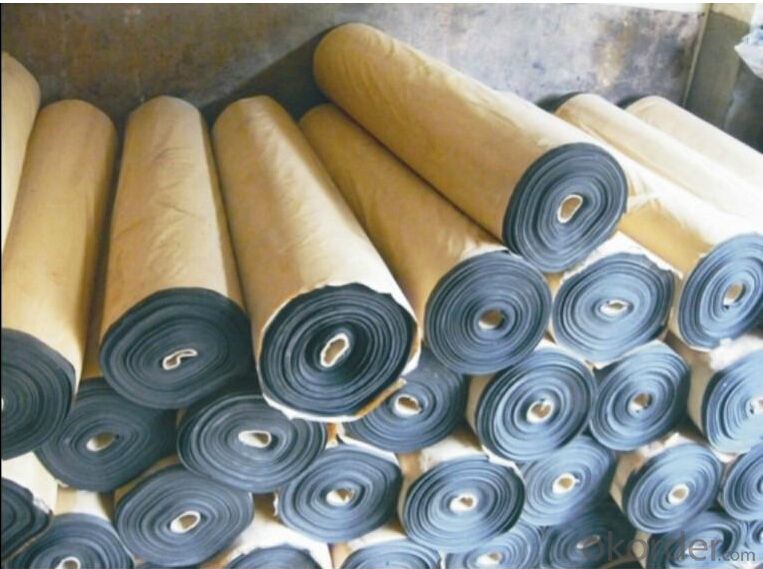
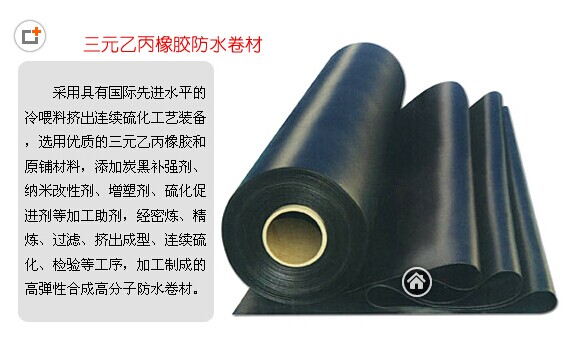
- Q: Are waterproofing membranes suitable for crawl spaces?
- Yes, waterproofing membranes are suitable for crawl spaces as they provide a protective barrier against moisture and water intrusion, preventing issues such as mold growth, structural damage, and musty odors.
- Q: Can a waterproofing membrane be used in roofs?
- Yes, a waterproofing membrane can be used in roofs. Waterproofing membranes are often used in roofing systems to provide a protective barrier against water infiltration, preventing leaks and water damage.
- Q: Can a waterproofing membrane be used in coastal areas?
- Indeed, the utilization of a waterproofing membrane is viable in coastal regions. Given their susceptibility to copious amounts of moisture and water exposure, it becomes imperative to implement efficient waterproofing measures. By appropriately installing and upkeeping a waterproofing membrane, one can establish a protective barrier, effectively thwarting water infiltration and averting structural damage while ensuring their longevity. Nevertheless, it is crucial to opt for a membrane specifically tailored for coastal environments as they exhibit heightened resistance to saltwater and possess superior durability to withstand the harsh coastal conditions. Moreover, routine inspection and maintenance are imperative to guarantee the continued efficacy of the waterproofing membrane in coastal areas.
- Q: Are waterproofing membranes suitable for underground parking garages?
- Underground parking garages necessitate waterproofing membranes due to their constant exposure to groundwater and moisture. These factors can result in water infiltration and structural damage. Waterproofing membranes offer an effective solution to prevent water penetration and safeguard the concrete structure from deterioration. The purpose of waterproofing membranes is to establish a barrier against water and moisture, effectively barring their entry into the garage. These membranes are commonly applied to the parking garage's exterior walls, foundation, and floor slab. They are crafted from durable materials like modified bitumen, polyurethane, or rubberized asphalt, capable of withstanding the harsh conditions of underground environments. By incorporating waterproofing membranes into underground parking garages, the likelihood of water damage, such as concrete cracking, reinforcement steel corrosion, and mold growth, is significantly reduced. The membranes serve as a protective layer, guaranteeing the longevity and structural integrity of the parking garage. Moreover, waterproofing membranes can also aid in minimizing vapor transmission, which may trigger condensation and humidity problems within the parking garage. This is especially crucial for underground parking garages located in regions with high water tables or susceptible to heavy rainfall. All in all, waterproofing membranes are an indispensable aspect of constructing or renovating underground parking garages. They offer a dependable and enduring solution to shield the structure from water infiltration, ensuring the safety and durability of the parking facility.
- Q: Can a waterproofing membrane be used for residential buildings or homes?
- Residential buildings or homes can indeed benefit from the use of a waterproofing membrane. Construction commonly relies on waterproofing membranes to safeguard against water infiltration, shielding both the structure and interior from moisture-induced harm. These versatile membranes find application in diverse areas like basements, roofs, foundations, and bathrooms, among others. By effectively blocking water, these membranes effectively thwart leaks, mold proliferation, and deterioration of building materials. Consequently, employing a waterproofing membrane proves highly efficacious in safeguarding the longevity and durability of residential buildings or homes.
- Q: Can waterproofing membranes be used on utility vaults?
- Utility vaults, which are commonly found underground and contain vital utility equipment like electrical transformers, water meters, and communication systems, can benefit from the use of waterproofing membranes. These structures are vulnerable to water infiltration, which can harm the equipment and disrupt its operation. To prevent water from entering utility vaults, waterproofing membranes are often employed. These membranes, typically composed of robust materials like rubber, PVC, or modified bitumen, form an impenetrable barrier against moisture. Applied to the walls and floors of the vault, they establish a tight seal that wards off any water seepage. By employing waterproofing membranes on utility vaults, the risk of water damage is significantly diminished. This safeguard ensures that the equipment housed within remains functional and undamaged for an extended period. Additionally, these membranes offer protection against other potential issues, such as leaks, corrosion, and chemical damage. However, it is crucial to note that the proper preparation of the surface and correct installation techniques are essential for a successful and enduring waterproofing system on utility vaults. Therefore, it is advisable to consult a professional waterproofing contractor with experience in working on utility vaults to achieve optimal results.
- Q: Can a waterproofing membrane be used on both interior and exterior surfaces?
- Both interior and exterior surfaces can benefit from the use of a waterproofing membrane. These membranes are created with the purpose of safeguarding surfaces against water infiltration and harm. Rubber, asphalt, or thermoplastic materials are commonly utilized to construct these membranes, which form a barrier to prevent moisture from penetrating. Whether applied to interior walls, floors, or exterior foundations, roofs, or balconies, a waterproofing membrane is highly effective in averting issues such as leaks, mold, or structural damage caused by water seepage. It is crucial to carefully consider the unique requirements of each surface and select an appropriate waterproofing membrane for the intended use.
- Q: Is a waterproofing membrane resistant to saltwater or other corrosive substances?
- Yes, a waterproofing membrane is generally resistant to saltwater and other corrosive substances. Waterproofing membranes are designed to provide a barrier against moisture and water penetration, which includes protection against corrosive substances. These membranes are typically made from materials such as modified bitumen, PVC, EPDM, or TPO, which have inherent resistance to saltwater and other corrosive elements. Additionally, some manufacturers may also incorporate additional protective layers or coatings to enhance the membrane's resistance to corrosive substances. However, it is important to note that the level of resistance can vary depending on the specific type and quality of the waterproofing membrane used. Therefore, it is crucial to choose a high-quality membrane that is specifically designed for the intended application, such as saltwater environments or areas exposed to other corrosive substances.
- Q: Can a waterproofing membrane be used on galvanized surfaces?
- Indeed, galvanized surfaces can benefit from the application of a waterproofing membrane. Typically employed to safeguard metal against corrosion, galvanized surfaces can experience even greater protective properties when a waterproofing membrane is utilized. By creating an additional layer of defense, the membrane effectively shields the galvanized surface from water infiltration, thereby averting potential rust or damage. However, it is crucial to ensure that the chosen waterproofing membrane is compatible with the galvanized surface and specifically designed for this particular application. Prior to implementation, it is advisable to seek guidance from the manufacturer or a professional in order to guarantee proper installation and compatibility when applying a waterproofing membrane to galvanized surfaces.
- Q: Can a waterproofing membrane be used for below-grade parking garages?
- Yes, a waterproofing membrane can be used for below-grade parking garages. In fact, it is highly recommended to use a waterproofing membrane in these types of structures to protect them from water infiltration and moisture damage. Below-grade parking garages are particularly vulnerable to water penetration due to their location underground. A waterproofing membrane acts as a barrier against water, preventing it from seeping into the structure and causing damage to the concrete, reinforcing steel, and other materials. The membrane is typically applied to the exterior walls and floor of the parking garage, providing a seamless and watertight seal. It is important to choose a high-quality and durable waterproofing membrane that is specifically designed for below-grade applications to ensure long-term protection against water ingress. Additionally, proper installation by trained professionals is crucial to ensure the effectiveness of the waterproofing system.
Send your message to us
EPDM Waterproofing Membrane Factory Price
- Loading Port:
- Qingdao
- Payment Terms:
- TT OR LC
- Min Order Qty:
- 2000 m²
- Supply Capability:
- 100000 m²/month
OKorder Service Pledge
OKorder Financial Service
Similar products
Hot products
Hot Searches
Related keywords
